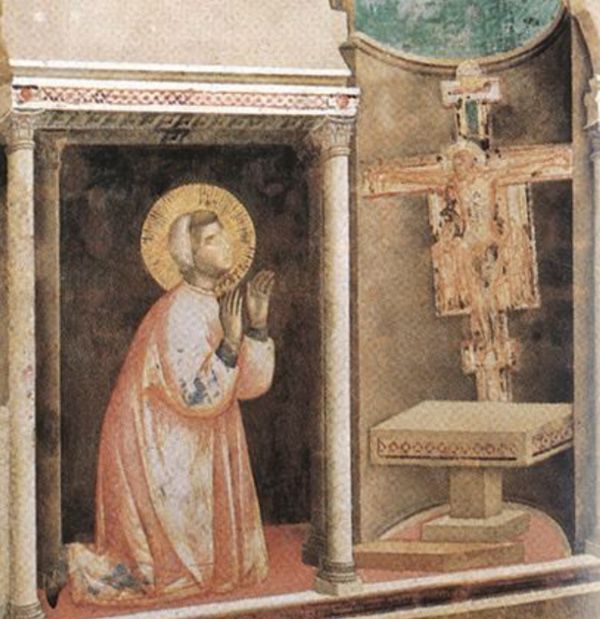John presents the cross as the exaltation of Jesus and thereby emphasises that the crucifixion - in appearance only death and defeat - is in reality the glorious revelation of God's love and the ascension of Jesus to the Father.
In Francis of Assisi, the uplifted [crucified] Christ was a constant object of his meditation and conformation.
The Poverello, over time, was visited by many infirmities and sorrows borne with dignity and joy, keeping his gaze fixed on the Son of God.
The Sources do not fail to remind us:
"Francis was infirm and full of pains on every side. Seeing him like this, one day one of his companions said to him:
"Father, you have always found a refuge in the Scriptures; they have always offered you a remedy for your sorrows. Please, even now let the prophets read to you: perhaps your spirit will exult in the Lord'.
The saint replied:
"It is good to read the testimonies of Scripture, and it is good to seek in them the Lord our God.
But, as for me, I have already taken so much from the Scriptures as to be more than sufficient for my meditation and reflection.
I need no more, my son: I know Christ poor and crucified" (FF 692).
Francis always kept alive in his conscience his encounter with the Crucifix of San Damiano.
Having entered that place to pray, led there by the Spirit, that experience radically marked his existence.
"He entered to pray, prostrated himself in supplication and devotion before the Crucifix and, touched in an extraordinary way by divine Grace, found himself totally changed.
While he is so deeply moved, suddenly - which is unheard of! - the image of Christ Crucified, from the painting* speaks to him, moving his lips.
"Francis," it says to him, calling him by name, "go, repair my house which, as you see, is all in ruins".
Francis is trembling and full of astonishment, and almost loses his senses at these words. But he immediately disposes himself to obey and concentrates everything on this invitation" (FF 593).
It is the Crucified One who then conforms him fully to Himself on the mountain of La Verna, reliving in the Minim's limbs His Passion.
The entire parable of the life of the Poor Man of Assisi is imbued with the Presence of the uplifted Christ.
He thus becomes an icon of reference in the journey of faith to draw every man in search to Jesus.
The mission entrusted to him by the Crucifix of San Damiano stigmatises his life, elevates him and makes him a friend of God, a place of encounter with the Divine.
Embraced by Christ, Francis began by doing what was necessary, then what was possible, and suddenly, surprisingly, he found himself doing the impossible, creating novelties and doing things pleasing to God.
Thus he allowed Love to be revealed in him and through him.
«When you have raised up the Son of Man, then you will recognise that I Am and do nothing of myself, but as the Father has taught me, these things I speak» (Jn 8:28)
*It is a tempera panel in Byzantine style, still visible in the basilica of St Clare in Assisi.
Tuesday 5th wk. in Lent (Jn 8,21-30)












